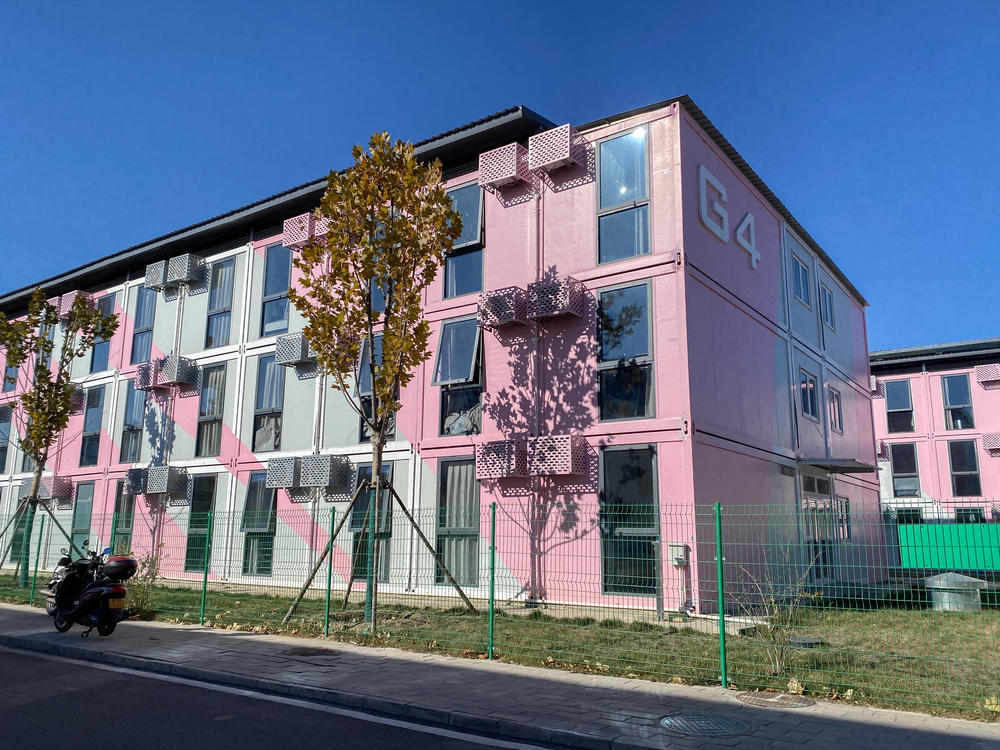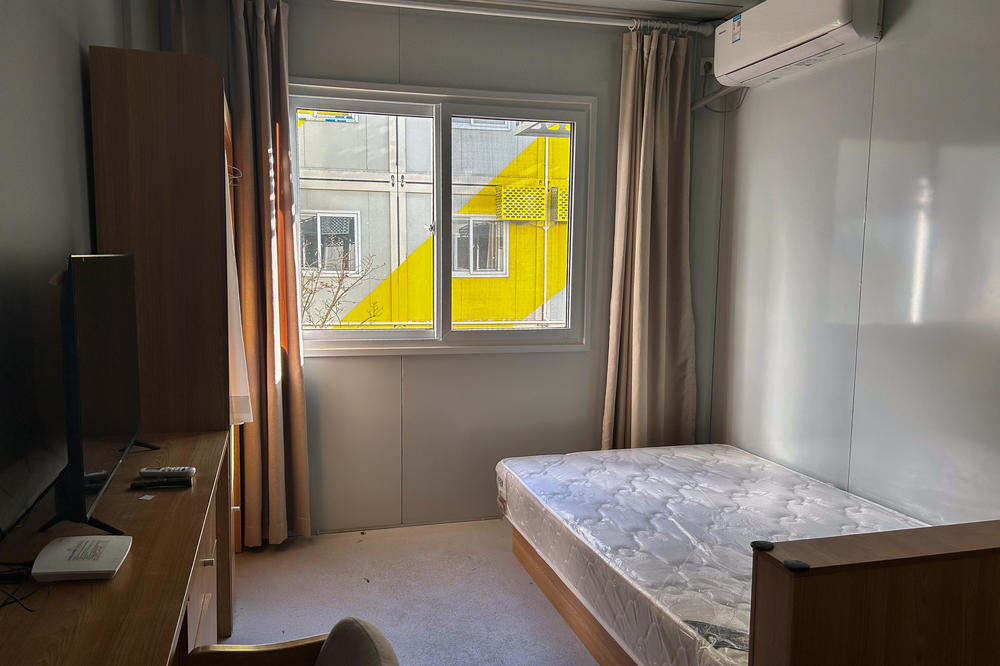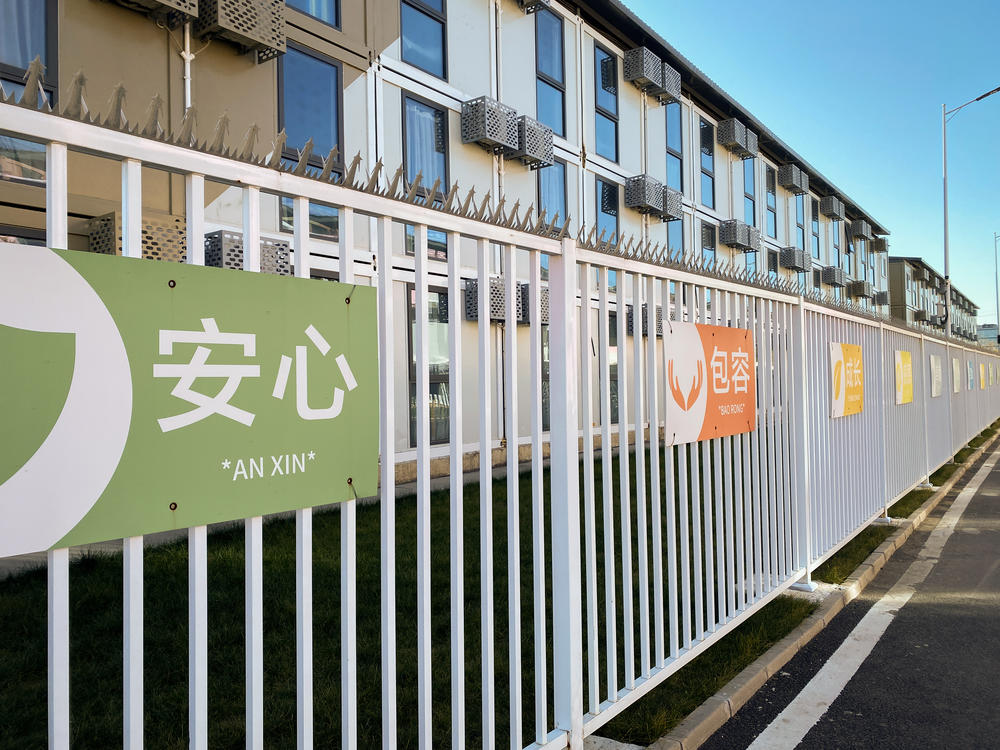Section Branding
Header Content
A year after lifting COVID rules, China is turning quarantine centers into apartments
Primary Content
During the global coronavirus pandemic, China built dozens of makeshift hospitals and state quarantine centers, some out of steel container boxes. They became closely associated with the anxiety of mass testing and the fear of sudden lockdowns.
Now, cities are turning the huge centers into affordable housing units for young workers in an attempt to revive the country's economy post-COVID.
"Skilled talents are an important group that promotes the development of the real economy," the Chinese province of Shandong said of the effort. "The temporary medical isolation facilities have become warm residences for talented [workers] to stay and rest. This kind of transformation and reuse magnifies the use value of the shelter and gives it new functions and missions."
A former life: Housing the quarantined
Just over a year ago, these apartments were used very differently: for medical triage and quarantine facilities. Beijing alone built 23 of these makeshift facilities, designed to hold up to 23,000 people at a time.
"It was not very cold yet but they told me to pack my belongings," remembers Hudson Li, a Beijing resident who was quarantined in one of these facilities, called fangcang in Chinese, in October 2022.
During the 10 days of quarantine, Li's movement was limited to a 190 -square-foot room with all the windows locked. Eventually, he was able to open the window a crack to let in fresh air. "They worried that I would escape from the window. It was like prison life," Li told NPR.
Starting in 2020, China closed its borders and required 2-4 week hotel quarantines for anyone able to enter the country. Within the country, it would lockdown entire cities if a handful of residents tested positive for COVID-19 and would isolate close contacts in the fangcang espescially-built for this purpose. In 2022, larger cities began requiring negative COVID tests from residents if they wanted to leave their apartments.
Less than two months after Li was quarantined, Beijing lifted most of its COVID restrictions. Li says he still associates the fangcang with a feeling of helplessness and fear: "It has been over a year already, but I definitely have PTSD from the pandemic, from the fear of scarcity and having to stock up on a lot of medicine and food."
Attracting young tenants with low rents
Now the fangcang across the country are undergoing a minor transformation and turned into apartment units for young graduates like Li. The changes are an effort from local authorities, who have been tasked with restarting economic growth and supporting small businesses after nearly three years of ruinous lockdowns.
Populous cities like Beijing are also trying to bridge the housing affordability gap between high real estate prices and low salaries, on average, for young workers. In the northeast corner of the capital city, near its airport, one fangcang with more than 4,900 units has been rebranded the "Jinzhan Colorful Community" — a reference to the bright hues of paint — and now offers amenities like a canteen where residents can grab a cheap meal before or after work.
Another fangcang facility, in the northeastern city of Jinan, has been turned into 650 units for skilled workers inside an industrial park.
"Given that the current overall [COVID] epidemic situation in the country has entered a low level, revitalizing the fangcang for other housing purposes is worth learning and thinking about all over the country," Yan Yuejin, a housing analyst, told Chinese media.
The fangcang, once a symbol of containment, are now supposed to represent dynamism and growth.
"I have complex feelings about this. The facilities were built using public funds and not rented out transparently," Li says. "But I do have to say you will not get anything more affordable than these apartments. They are very price competitive."
A list of rental prices for a Beijing fangcang converted into apartments shows most rooms are Rmb1200 (USD $170) a month, low for Beijing.
One tenant's surprise
A new tenant in the former Beijing fangcang is Sophie Shi, 22. She works at a startup that allows her to work from home, and the apartments suit her just fine.
But she was a little surprised when she moved in earlier this year and found out what her home had been used for in a past life.
"There were signs on A4 sheets of paper left in the rooms with instructions like, 'line up here for group meals' and COVID-era slogans left taped on the walls encouraging 'bravery' and 'be calm,'" she told NPR. "Then it hit me in an instant: This used to be a COVID facility."
The low rent is what has kept her there. For a private studio, she now pays half the rent she used to while sharing an apartment with roommates in the capital city.
However, she is planning to move out soon. There is no bus or metro station close by. After all, the center was designed to be remote in order to quarantine people, so the location is not the most convenient for a young urban dweller.
Built from little more than metal shipping containers stacked on top of each other, the fangcang also has poor noise insulation, which is problematic for Shi when she works from home. When she walks around her apartment, the thin floorboards shake.
"Sound insulation is an issue because it is just made of iron sheets. I can clearly hear my neighbors upstairs, and the frequent sound of airplanes [from the nearby Beijing airport] is quite obvious."
She said she would still recommend the apartment to friends who are looking to cut back on living costs. The city's government is encouraging people to move in as well. According to a Beijing state newspaper, more than 500 people had moved into this complex by last month and "made their housing dream come true."
Emily Feng reported from Taipei, Taiwan. Aowen Cao contributed research from Beijing.
Copyright 2023 NPR. To see more, visit https://www.npr.org.



